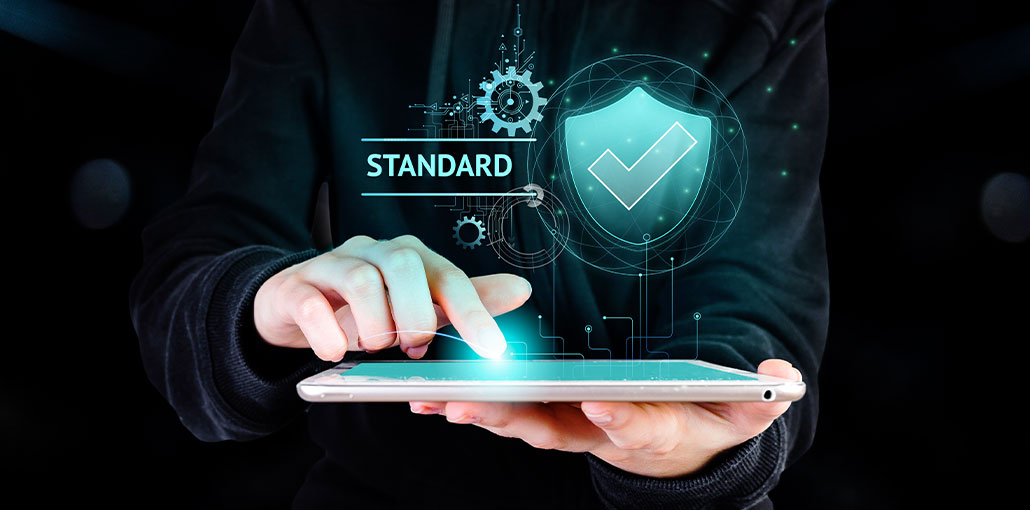IoT Devices are small components that are used for a wide range of products (medical devices included) and are notoriously vulnerable to cyber-attacks.
Yet, they’re everywhere — including our homes, offices, and hospitals.
So, why are IoT devices so vulnerable?
The main challenges to hacker-proofing what is now more than 15 billion worldwide IoT devices include:
- Lack of universal standardization, guidelines that tell manufacturers how to secure IoTs
- Low visibility of IoT devices within companies
- Poor insight into which data are IoTs accessing at all times
- The versatility of IoT devices makes it difficult to protect them with one universal solution
- Limited space within the smart components to install protective software
To combat these key IoT security issues, the US government has announced a new program designed to help users see which IoT-based technology is secure against hacking incidents.
Here we explain what to know about Cyber Trust Mark.
What Is Cyber Trust Mark?
Cyber Trust Mark is a cybersecurity initiative focused on the security of IoT devices. The US government initiated the program to label IoT devices as “safe” against cyber threats.
This certification was drafted for companies that are getting increasingly digitized, as well as for manufacturers of IoT devices.
Larger companies that add more and more IoT technology to their infrastructures are more likely to have vulnerable components. The complete visibility of such devices inevitably gets murky, and it’s difficult to detect whether they put the company at critical risk.
Manufacturers that add IoT components to their products lack the internationally recognized guidelines they can follow to continually improve the security of this technology.
This is where Cyber Trust Mark enters the conversation, with the label will being applied to products that meet the established cybersecurity criteria.
The Cyber Trust mark is expected to go into effect in 2024, paving the path towards a more IoT security future.
What Does The Label Mean For Manufacturers?
With the exception of outdated IoT devices, most manufacturers already release regular patches for new flaws they uncover within their devices.
If they become a part of the Cyber Trust Mark program, they will be encouraged to update products that are already on the market and release new, safer versions of that device.
Security matters to consumers. This label is an opportunity for companies to market themselves as more secure than their competitors. This means that the Cyber Trust Mark can become a unique selling point.
In a world where customers are deeply aware of data breaches and hacking threats, they are more likely to choose a brand that cares about user security.
Also read: Top 10 IoT Device Monitoring Tools
What Does the Program Mean For Cybersecurity Experts?
Cyber Trust Mark will help companies protect IoT components and let them know how well they are protected from possible exploits. It will give IT teams clearer guidelines they need to follow.
Businesses that have cybersecurity teams and use large numbers of IoT devices are aware of the possible damage flawed components can cause to their organization.
However, they often lack adequate security solutions designed for such devices. Their teams don’t have the time to manage the increasing number of such components, either.
Many of the tools that cybersecurity experts within companies have in their arsenal focus on different vulnerabilities and parts of the infrastructure that don’t exactly cover the IoT space.
For instance, they might be hyper-focused on cloud data protection and the security of endpoint devices, while neglecting all the ways that IoT devices might allow cyber criminals to compromise the company.
After applying Cyber Trust Mark’s risk-based approach and provided guidelines, security teams will have a better idea of how well they’re prepared against potential cyber-attacks.
What Does The Label Mean For Consumers?
IoT devices are in every smart device, from robot vacuum cleaners and door cameras to printers and TVs.
Most people assume that all of the devices they have are well-protected against possible hacking activity. In reality, IoT devices are designed with a focus on lesser cost and more convenience — which often means that the security of such devices is sacrificed in the process.
The number of IoT devices worldwide is increasing every day.
Therefore, brands that are part of Cyber Trust Mark give their users a sign of trust. Before, customers didn’t have a way to tell if the devices they purchased are well-protected or not.
Now, customers can choose the technology that is less likely to compromise the privacy and safety of their homes.
Making a Mark: An Important Step Towards More Secure IoTs
Cyber Trust Mark doesn’t mean that the matter of IoT security is finally resolved.
IoT device security is a complex field that can’t be fixed with a single solution. Companies will still need multiple layers of cybersecurity tools to protect their most valuable assets.
The program isn’t even close to being the first step toward protecting IoT device technology from cyber exploits.
Other regulations have been issued in recent years, all to strengthen the security of IoT components.
However, the program does add additional pressure on manufacturers. It encourages them to push the envelope and improve the security of their devices while also facilitating the jobs of security professionals.
More nuanced guidelines for protecting IoTs mean that we might be headed towards unified standards for protecting IoT devices.










Leave a comment